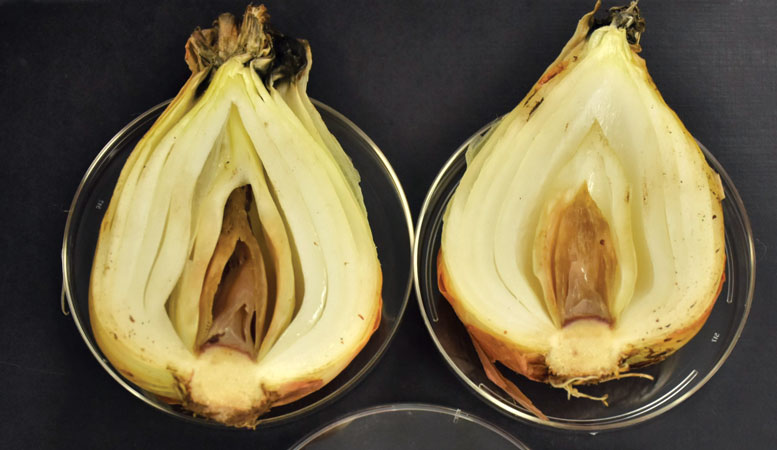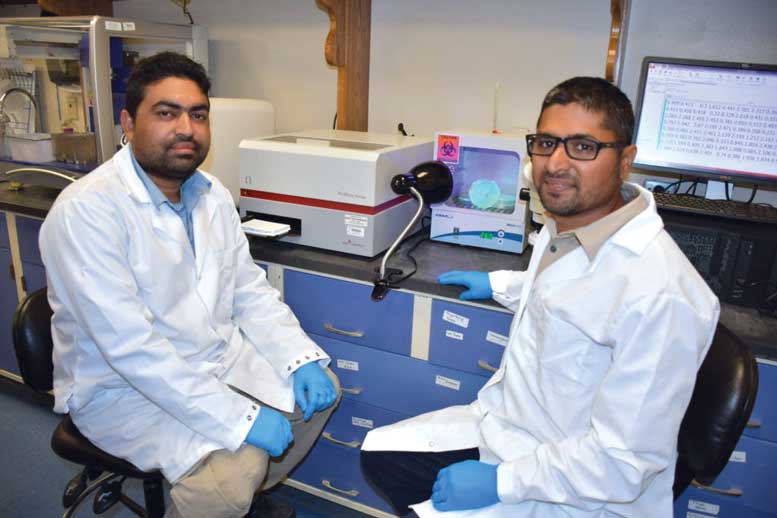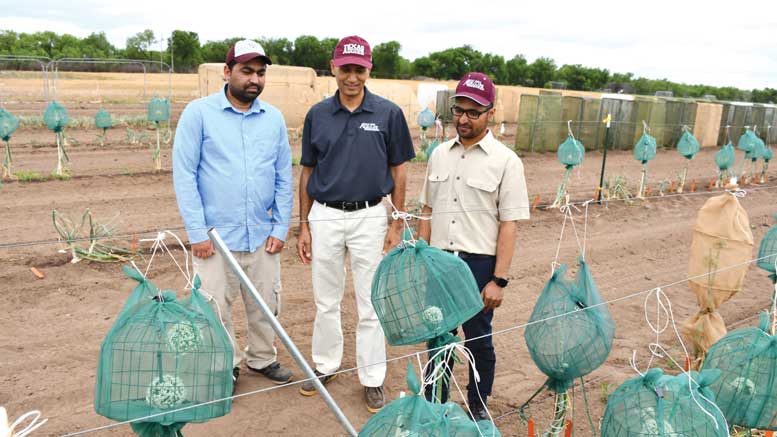|
Click to listen to this article
|
While conducting a survey of bacteria in onions, a team of Texas A&M AgriLife researchers in Uvalde, Texas, identified a new pathogen, a bacterial species now named for where it was found.
“This novel disease can significantly impact marketable yield and possibly incur tremendous loss to onion growers in Texas and beyond,” said Subas Malla, a Texas A&M AgriLife Research assistant professor of vegetable breeding and genetics. “Identification is crucial to understand more about its distribution, potential disease outbreaks and possible control methods.”
The statewide, national and international prevalence and geographic distribution is unknown. Thus, the full impact of this newly documented pathogen, which has been named Pseudomonas uvaldensis sp. nov., is yet to be determined.
Identifying this new bacterium provides more information about late-season and potentially post-harvest bulb rots, which can significantly decrease yield and quality, said Kimberley Cochran, a Texas A&M AgriLife Extension Service plant disease specialist.
“Texas onion pathology is an area that needs more study, particularly in the case of bacterial pathogens,” she said. “But with this work, the first step has been taken to better understand the full impact of this species.”

Analyzing the Pathogen
For the last three years, Malla’s lab in Uvalde, Texas, has been conducting a bacterial survey on onions in Texas’ Rio Grande Valley and Winter Garden region.
Malla is a collaborator on the “Stop the Rot” project, a four-year Specialty Crop Research Initiative project funded by the USDA National Institute of Food and Agriculture. It was as part of this project that a member of Malla’s team, Manzeal Khanal, a research associate with AgriLife Research, along with Texas A&M graduate student Bed Prakash Bhatta, isolated and identified this pathogenic novel species from a diseased onion bulb.
Khanal performed a preliminary identification of the bacterium using the Sanger sequencing on 16S rRNA gene. The results showed similarities to common pathogens in other crops.
“The 16S rRNA gene sequence of the strain was similar to Pseudomonas mediterranea and Pseudomonas corrugata, but these species are common pathogens of tomato and pepper and not known to cause disease in onion,” Khanal said.

When he realized he may be looking at a new pathogen of onion, Khanal performed whole-genome sequencing for accurate identification of the strain. After analyzing the complete genome of the unique strain, he realized the genome did not meet the criteria assigned to any known species of Pseudomonas. In addition to whole-genome sequencing, biochemical and physiological features of the strain were also examined as part of the phenotypic fingerprinting effort.
“Using this polyphasic approach to taxonomy, the strain was confirmed as a novel species,” Malla said. “We named the species Pseudomonas uvaldensis sp. nov., as a tribute to the city of Uvalde, where the Texas A&M AgriLife center has been conducting research and extension outreach for half a century.”
The work is a collaboration among scientists from the Texas A&M AgriLife Research and Extension Center at Uvalde, the University of Florida and the University of Pretoria, South Africa. Findings are published in the International Journal of Systematic and Evolutionary Microbiology.

Story and photos courtesy AgriLife Today


